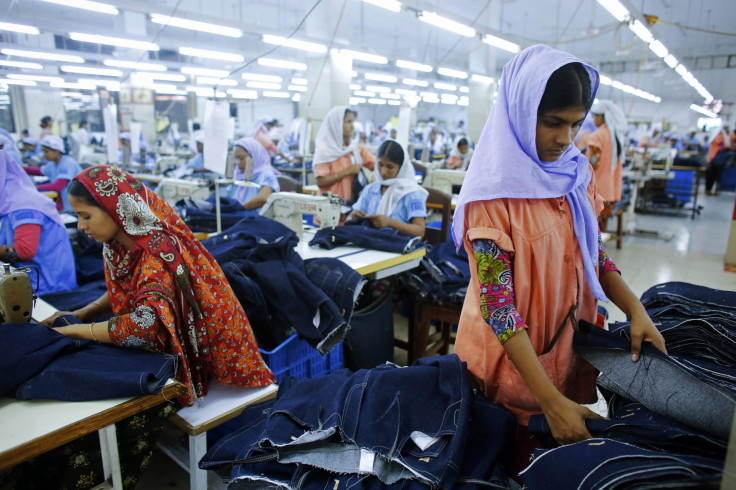Bangladesh’s Garment Exports Surge In July; US, Canadian Retailers Due To Meet To Implement Factory Safety Plan

Bangladesh’s garment exports jumped, on a year-on-year basis, by more than 26 percent in July, the first month of Bangladesh’s fiscal year ending in 2014, after a garment factory building collapse in April that killed more than 1,000 workers brought widespread international criticism against the country’s government and garment industry for ignoring workers’ safety and rights.
Bangladesh’s overall export earnings grew 24 percent to reach $3.02 billion in July, from $2.43 billion in the same period in 2012, riding on a significant surge in apparel exports, according to data released on Aug. 12 by the government’s Export Promotion Bureau, or EPB. In comparison, the overall growth in export earnings in July 2012 was only 4.26 percent over July 2011, when the country registered export earnings of $2.33 billion, according to Bangladesh’s Financial Express.
Atiqul Islam, president of the Bangladesh Garment Manufacturers and Exporters Association, or BGMEA, told the Express that growth surge in July was due to orders which were placed four months back.
Increased pressure on Bangladeshi exporters as well as foreign buyers to comply with tightened industry standards, after April’s tragedy in the commercial suburb of Savar, about 20 miles from the capital, Dhaka, is expected to reflect in the export figures in coming months, although not significantly, according to a key industry figure, Fazlul Hoque, who spoke to the Express.
EPB Vice Chairman Shubhashish Bose said the government is exploring new potential markets such as China, Japan, Africa and South America, in an effort to reduce Bangladesh’s dependency on the U.S. and the European Union, which have been pressuring Bangladesh to reform its labor laws and safety regulations, by suspending or threatening to suspend preferential access to garments made in Bangladesh.
On Tuesday, a group of U.S. and Canadian apparel companies that source garments from Bangladesh, including Wal-Mart Stores, Inc. (NYSE:WMT), The Gap Inc. (NYSE:GPS) and Macy's, Inc. (NYSE:M) are scheduled to meet in Chicago to initiate the implementation of a five-year safety plan, unveiled in July, for improving working conditions in garment factories the South Asian nation.
The plan, which drew criticism as being “toothless” and “not serious,” is expected to take effect by Sept. 10, according to a timeline published by a group known as the Alliance for Bangladesh Worker Safety.
The project represents “a significant financial commitment, including an initial worker safety fund, currently $42 million and growing, and the additional availability of over $100 million in access to low-cost capital funding to improve fire and structural safety in Bangladeshi factories,” the alliance said in a statement on its website.
In Bangladesh, representatives of garment workers, in a set of proposals submitted on Sunday to the chairman of the Minimum Wages Board, operating under the Ministry of Labor and Employment, demanded that the government fix Tk8,114 ($104) as the new monthly minimum wage for garment workers, Dhaka Tribune reported.
The current minimum pay for Bangladeshi garment workers is $38 a month, which is about half of what garment workers in Cambodia earn, according to Reuters. Bangladesh last revised the minimum wage in late 2010, when the pay was almost doubled, but this time the government is reportedly facing strong opposition from factory owners against raising wages above a certain level.
However, Shahidullah Azim, vice president of BGMEA, announced support for the wage hike, saying: “We are for wages hike and will follow the board’s decision,” Dhaka Tribune reported.
© Copyright IBTimes 2024. All rights reserved.






















